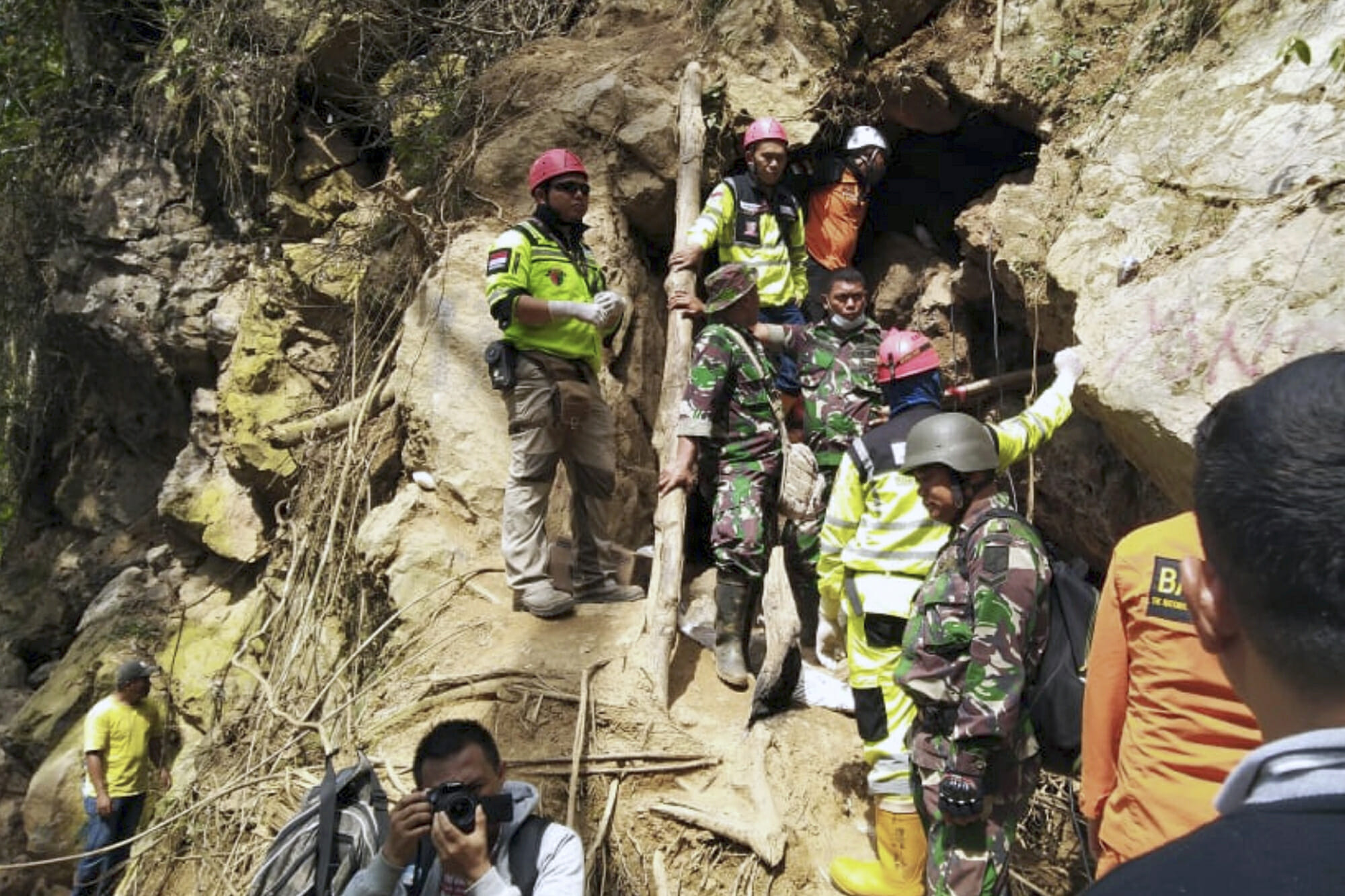
Rescuers use excavator at collapsed Indonesia gold mine
BOLAANG MONGONDOW, Indonesia (AP) — Rescuers brought an excavator to the remote Indonesian gold mine that collapsed earlier this week, trapping dozens, hoping to speed up rescue efforts despite the risk of triggering landslides.
Local disaster official Abdul Muin Paputungan said Friday the death toll has risen to eight and 20 have been rescued. About three dozen people are still believed trapped in the rubble of the unlicensed mine in North Sulawesi’s Bolaang Mongondow district that collapsed on Tuesday evening.
Paputungan said an excavator began working on the site Friday morning after relatives gave permission and a path was cleared through steep jungle terrain.
He said the dozens of emergency workers involved in the grueling rescue “never stop praying that all those still trapped in the mine are able to survive until we can rescue them.”
Food and water has been passed to some of those trapped but officials are concerned oxygen is dwindling in parts of the mine. Rescue workers have used makeshift stretchers to haul victims to a nearby settlement.
Wooden structures in the mine collapsed Tuesday evening due to shifting soil and the large number of mining holes. Informal mining operations are commonplace in Indonesia, providing a tenuous livelihood to thousands who labor in conditions with a high risk of serious injury or death.
On Thursday, a trapped miner’s leg was amputated to free him but the man died from blood loss while being carried out of the area.
The national disaster agency said more than 200 people from multiple agencies are involved in the rescue but frustration was growing among family members of trapped miners.
“The process to rescue only one person takes the whole day,” said Amin Simbala, father of a buried miner. “Don’t be concerned by this one person only, just get him out, if you need to amputate then amputate so others can still be saved.”
Rescuers have used their bare hands and basic tools to search for the missing. They’ve fashioned stretchers from tree branches, twine and other material. Photos showed a trapped miner’s arms and head jutting through a gap in rocks and rescuers toiling each night in arduous conditions.
The search and rescue operation is difficult not only because of the remote and inaccessible location but also because of the risk of triggering new collapses inside the mine.
Commenting Thursday on the miner who died after his leg was amputated, Paputangan said, “We were forced to amputate his leg to get him out because besides his lower leg being badly injured, the rock that squeezed it was impossible to shift or lift because we feared it could cause landslides and endanger rescuers and other victims.”
Small artisanal and often unauthorized mining is rising in many parts of Asia and Africa. A study by the Intergovernmental Forum on Mining, Minerals, Metals and Sustainable Development found the number of people engaged in such mining had risen to more than 40 million, up from 30 million in 2014 and 6 million in 1993.
Landslides, flooding and collapses of tunnels are just some of the hazards. Much of the processing of gold ore involves use of highly toxic mercury and cyanide by workers using little or no protection.
___
Karmini reported from Jakarta, Indonesia.
The Western Journal has not reviewed this Associated Press story prior to publication. Therefore, it may contain editorial bias or may in some other way not meet our normal editorial standards. It is provided to our readers as a service from The Western Journal.
Truth and Accuracy
We are committed to truth and accuracy in all of our journalism. Read our editorial standards.
Advertise with The Western Journal and reach millions of highly engaged readers, while supporting our work. Advertise Today.












